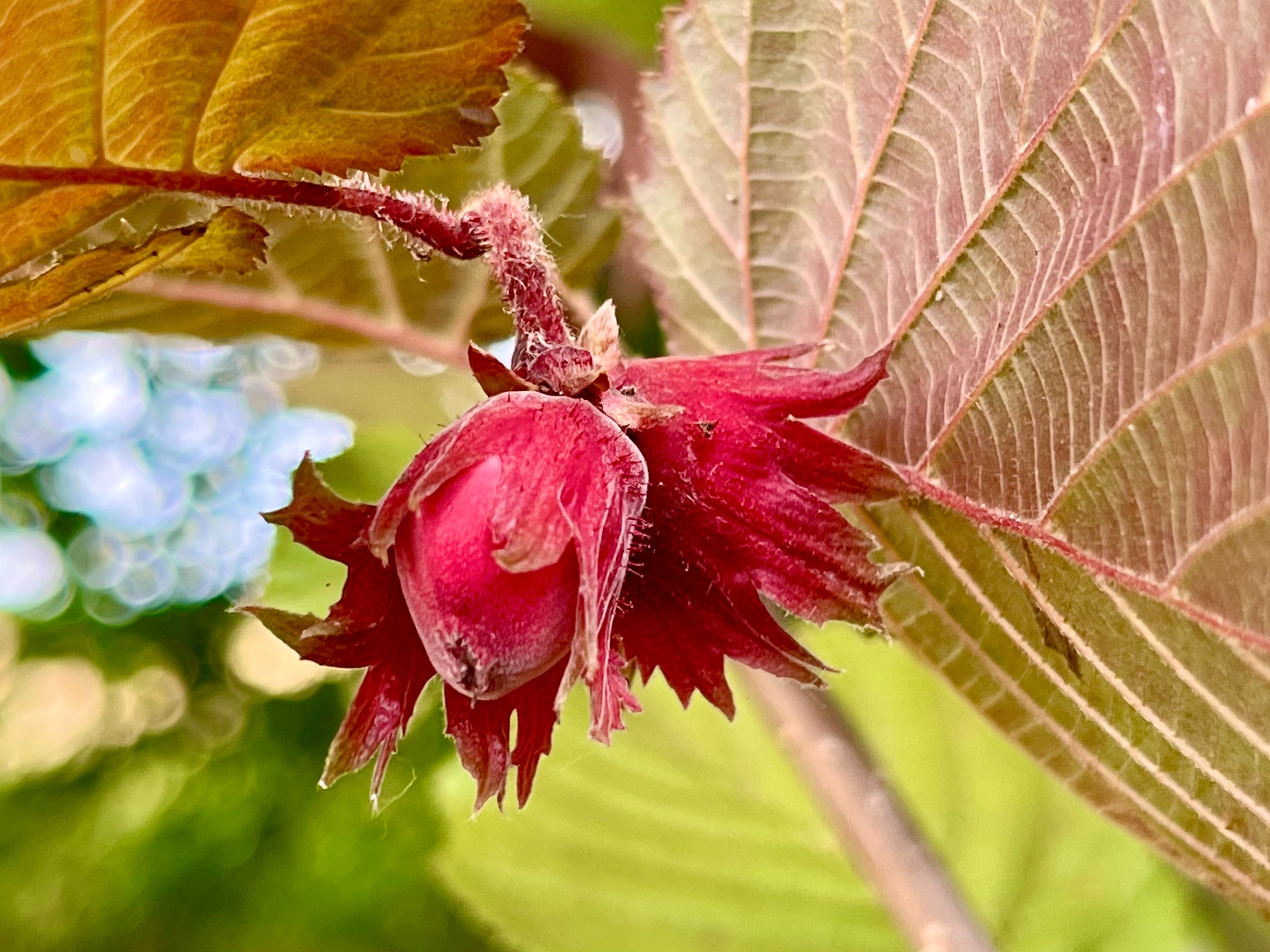Nut jobs

A few years ago we started a small nuttery behind the showroom at Genus HQ. The trees we planted - a selection of hazelnuts and filberts - included ‘Corabel’, ‘Halls Giant’, and ‘Red Filbert’ which have thrived in the semi-shaded spot on the edge of our small copse.
We gained some valuable planting space this week with the removal of some old rotting elder stumps and added to our hazel nut collection with the addition of ‘Rode Zellenoot’ a beautiful tree with burgundy leaves and eye catching crimson coloured nuts. The other variety we planted was ‘Gunselbert’ a philbert that fruits from a young age with particularly large nuts and a heavy crop.
And the difference between hazelnuts and philberts? In our opinion very little. It mainly relates to the size of the husk or ‘beard’ as it is sometimes called. Philberts have very long beards that cover the entire nut while in hazelnuts it’s much shorter but essentially the nut itself tastes much the same.
Philberts get their name from an old belief that the nuts started to ripen on the 20th of August - St Philbert’s Day. Three weeks later on Holy Cross Day - the 14th of September - children were allowed out of school to go ‘nutting’, a tradition which endured up until the first world war. With some of our young trees already showing signs of fruit we’ll be looking forward to September ourselves with great anticipation.







